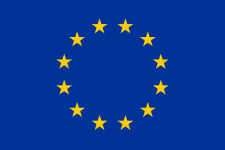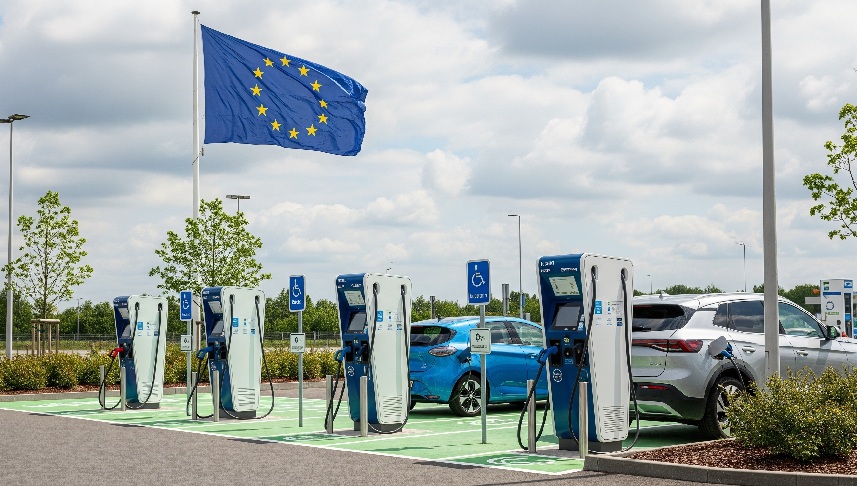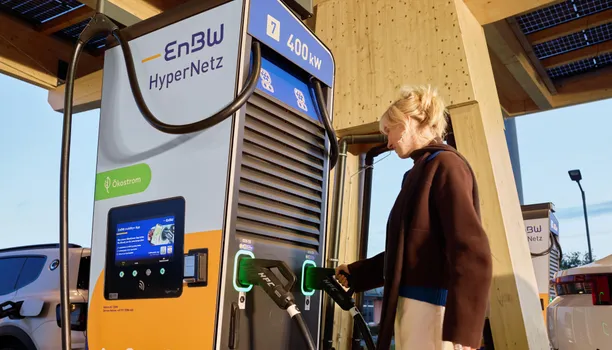The European Union (EU) reached a historic milestone in July 2025, with the combined number of publicly accessible charging points surpassing one million, according to data from the European Alternative Fuels Observatory (EAFO).
Specifically, by the end of the seventh month, the EU had 1,005,080 charging points, of which 833,643 were alternating current (AC) and 171,437 were direct current (DC).
These figures reflect steady growth in both segments.
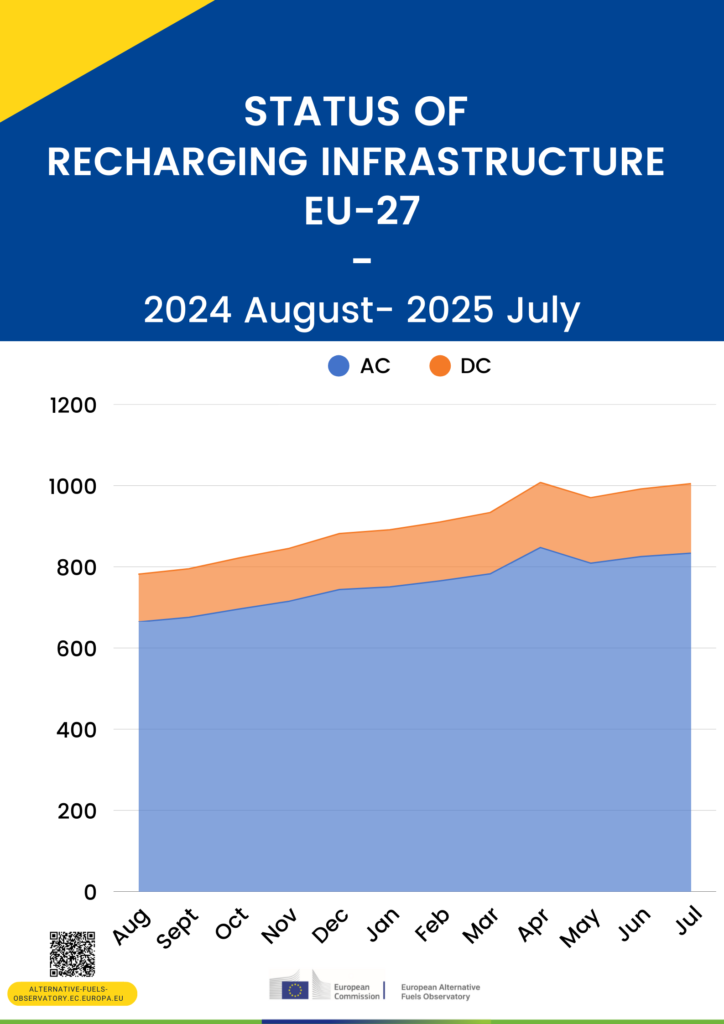
Compared to June, AC chargers increased by approximately 8,500 units, while DC chargers rose by nearly 5,000.
Fast charging continues to gain momentum, growing at a faster pace than standard AC infrastructure.
It is worth noting that since January 2025, the EU network has added over 90,000 AC points and more than 30,000 DC points, highlighting the rapid expansion needed to meet the targets set out in the Alternative Fuels Infrastructure Regulation (AFIR).
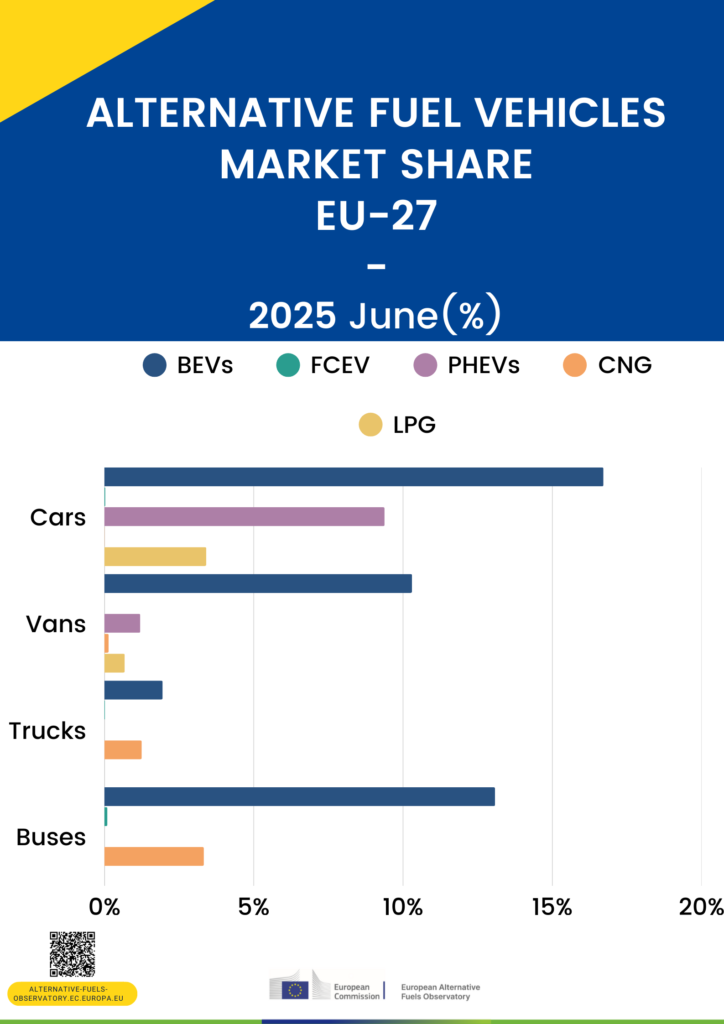
Alternative fuel vehicle market share in EU-27
Battery electric vehicles (BEVs) strengthened their role in Europe’s new vehicle market by mid-2025.
BEVs reached 16.7% of new car registrations, making them the clear leader among alternative drivetrains, followed by plug-in hybrids with 9.4% and LPG cars with 3.4%.
For vans, BEVs held a 10.3% share, far ahead of PHEVs (1.2%) and gas-fuelled options.
In the truck sector, BEVs made up 1.95% of new registrations, while CNG trucks retained a 1.25% share and fuel cells remained marginal.
Buses showed strong electrification, with 13.1% of new registrations battery electric and a further 3.3% CNG.
Fuel cell buses accounted for just 0.1%. Overall, electricity is now the most significant alternative fuel across all segments.
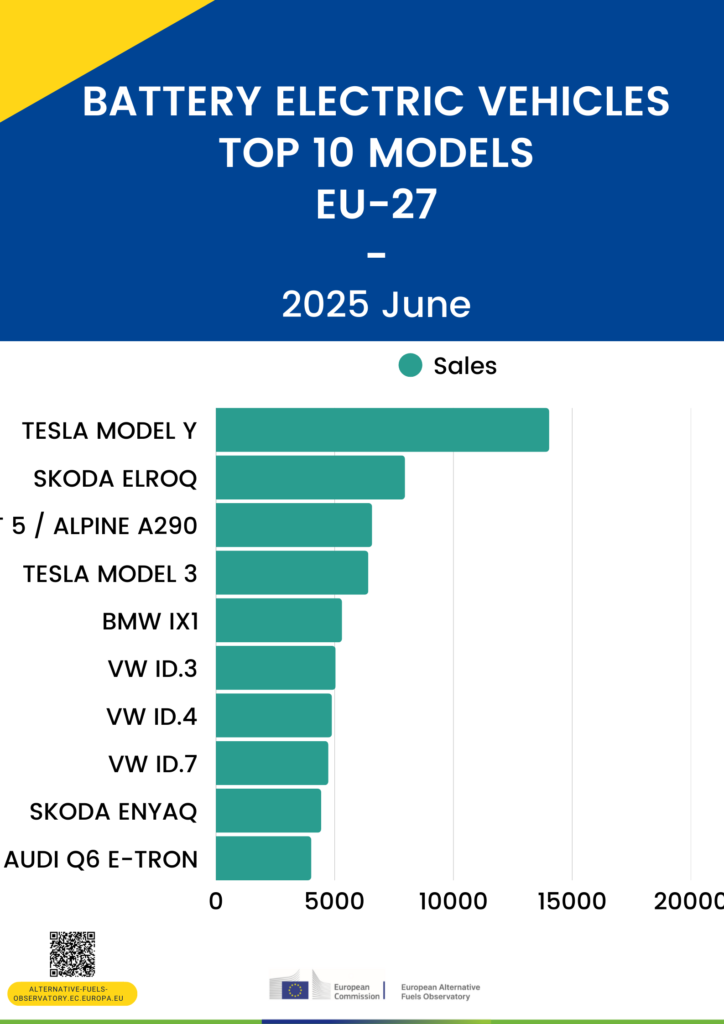
Top 10 BEV models
In June 2025, the Tesla Model Y continued to dominate Europe’s BEV market, registering over 14,000 new units.
The Škoda Elroq secured second place with almost 8,000 sales, followed by the newly launched Renault 5 with 6,600 units, both underlining the strong momentum of compact EVs.
Tesla’s Model 3 remained in the top five, with 6,400 units.
German manufacturers also performed strongly: the BMW iX1 sold 5,300 units, VW’s ID.3 and ID.4 added over 9,900 together, while the ID.7 reached 4,700 sales.
The Škoda Enyaq and Audi Q6 e-tron completed the top 10, each exceeding 4,000 units, confirming the broadening appeal of European models.
READ MORE
-
chargecloud Expands Marketplace with AI-Based Support: Cooperation with Lemonflow Technologies
The integration brings 24/7 AI-powered user support, fully embedded into the chargecloud ecosystem, aiming to enhance operational efficiency and service quality for CPOs across Europe.
-
EV transition in Europe slows, but momentum remains after EU climbdown
EU policy flexibility may ease short-term pressure on automakers, yet rising EV sales, infrastructure needs and long-term investment signal that electrification remains the industry’s core trajectory.
-
EnBW and Alpitronic strengthen long-term partnership to scale high-power charging across Germany
The agreement covers fast-charging hardware, joint development of future functionalities and a multi-year maintenance framework to support EnBW’s expanding HPC network.



